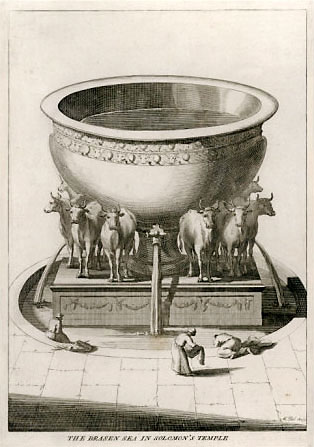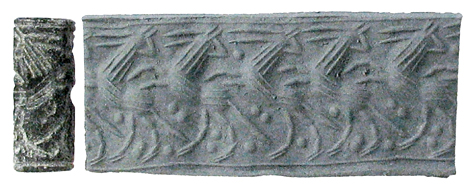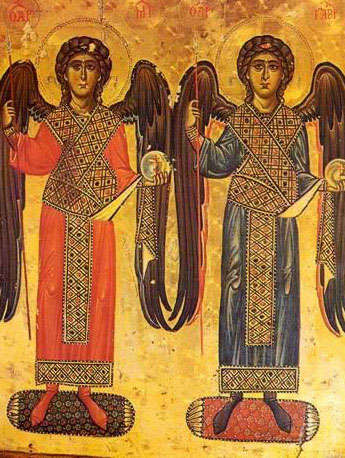Dec
1
2012
Shedding Blood in the Dark: The Liturgical Shape of Skyfall
 [This post contains detailed spoilers.]
[This post contains detailed spoilers.]
James Bond: Everybody needs a hobby.
Silva: So, what’s yours?
James Bond: Resurrection.
In the late 60s and early 70s, the structures of traditional Western storytelling were deliberately omitted from “thinking” films. Bleak narratives reflected the randomness of life without faith. Movies were becoming formless and void.
Continue reading
2 comments | tags: Feasts, Film, Literary Structure, Moses, Steven Opp | posted in Bible Matrix, Biblical Theology
Nov
14
2012

A recent post by Jeff Meyers, reproduced in full here with his permission.
I see that the Gospel reading in the lectionary this week is Mark 12: 38-44. I’m preaching through the 10 commandments, so I won’t be commenting on this passage on Sunday. But I would like to give a different perspective on this passage than what is normally heard.
Continue reading
3 comments | tags: Jeff Meyers, Literary Structure, Mark | posted in Biblical Theology, The Last Days
Oct
18
2012

Part 1 | Part 2 | Part 3
Strange Fire
We’ve reach the central “cycle” of the book of Numbers, the attempt by Balak to destroy Israel. To the unbeliever, it is a story about a talking donkey. For believers, it is a story about a wicked prophet and a carnal people. For those with a wide angle “Bible Matrix” lens, the entire landscape suddenly comes into focus as something familiar and terrifying.
Continue reading
3 comments | tags: Aaron, Balaam, Compromise, Covenant curse, Covenant Theology, Joshua, Literary Structure, Lot, Luke Welch, Moses, Numbers, Numbers 5, Phinehas | posted in Bible Matrix, Biblical Theology, The Last Days
Oct
13
2012

Members, here’s a ripe new chapter from God’s Kitchen. The book should be available some time in November.
Continue reading
2 comments | tags: Abraham, Covenant curse, Covenant Theology, Leviticus, Literary Structure | posted in Bible Matrix, Biblical Theology
Sep
11
2012
The Holy Herringbone
 Part 1 here.
Part 1 here.
We’ve covered the first “Covenant cycle” in Numbers, which in theory should set the pattern (fractally) for the remainder of the book. Here’s my go at the second cycle, which (again, in theory, if my suspicions are correct), should be an “exposition” of the second part of the first cycle, which concerned the “military” arrangement of the tribes around the Tent of Meeting (Delegation). So, even though this cycle works through all seven steps, each step should reflect an “Exodus/Hierarchy” or Delegation theme. Each step thus has two literary “spatial coordinates,” an X and a Y. Each step must thus employ a symbol that pertains to two different Covenant steps, or describes the relationship between them.
Continue reading
1 comment | tags: Aaron, Covenant Theology, Fractals, Literary Structure, Miriam, Moses, Numbers, Systematic typology | posted in Bible Matrix, Biblical Theology, The Last Days
Sep
1
2012
Bulls and Basins

“You are beautiful as Tirzah, my love, lovely as Jerusalem, awesome as an army with banners.” (Songs 6:4)
An online friend recently questioned the repetition found in Numbers 7. The offerings of each tribe are identical, yet each is listed in full. Surely, this was a waste of expensive parchment? Architecture is important to God, no less literary architecture, and it seems to me that the “fullness” of the Offertory in chapter 7 is the result—or the liturgical response, to the military “forming” of Israel in chapter 2.
Continue reading
Comments Off | tags: Covenant curse, Covenant Theology, Laver, Literary Structure, Nazirite, Numbers, Numbers 5, Tabernacle | posted in Bible Matrix, Biblical Theology
Aug
30
2012
Theandric Plenipotentiary Iteration
 “It takes on form like clay under a seal…” (Job 38:14)
“It takes on form like clay under a seal…” (Job 38:14)
Read The Secret before you read this post.
Typology is the science of recognizing the shape of one thing stamped upon, into, something else. In itself, this is not an exact science by any means, and is prone to abuse. Thankfully, the Bible doesn’t simply give us isolated “indentations”; it gives them to us in sequences. Sequences of ideas, like sequences of musical notes, are exact, even if our identification of them is not yet as refined as we would like.
[This post has been refined and included in Sweet Counsel: Essays to Brighten the Eyes.]
Continue reading
Comments Off | tags: Chiasm, Feasts, Genesis, Literary Structure, Mark Horne, Revelation | posted in Bible Matrix, Biblical Theology, Creation, The Last Days
Aug
22
2012

And every pot in Jerusalem and Judah shall be holy to the Lord of hosts, so that all who sacrifice may come and take of them and boil the meat of the sacrifice in them. (Zechariah 14:21)
Working on a post about the use of seals in Revelation, I was looking through the uses of the word “seal” throughout the Bible. Daniel 9:24, a very famous verse, showed up, and its structure struck me as worth some analysis. If structure is indeed part of the means of the Author’s communication, it is not an optional extra.
Continue reading
Comments Off | tags: AD70, Covenant curse, Covenant Theology, Daniel, Feasts, James Jordan, Levites, Leviticus, Literary Structure, Peter Leithart | posted in Bible Matrix, Biblical Theology, The Last Days, The Restoration Era
Aug
19
2012

Holistic Impression
On the shape of biblical language, John Breck writes:
How are we to read the Bible?
The question invites a reply that expresses an attitude: we should read it with respect, with devotion, with curiosity, perhaps even with awe. Certainly these are appropriate responses. Our concern in this present study, however, is not with attitudes but with the approach we use.
Continue reading
Comments Off | tags: Chiasm, Hermeneutics, John Breck, Literary Structure | posted in Bible Matrix, Biblical Theology, Quotes
Jul
25
2012

God Has You Covered
Parsing Psalms means consulting the Hebrew for the word order. This one was quite difficult, once again because English translations mess with things, and also because the Hebrew author likes to play with the matrix structures to make a point. I find I have to redo sections and keep shaking it up until it all falls into place. Is this sentence part of the previous stanza or the beginning of a new one? Or does this stanza have one line that gets expanded into its own pattern to make a point?
The good thing is that once it shakes out, there are some beautiful surprises. One of the gems in this Psalm is the sentence concerning the sun and the moon. In English it is simply two lines (a parallelism), but in Hebrew it is chiastic. Wonderful.
Continue reading
4 comments | tags: Chiasm, Feasts, Literary Structure, Psalms, Tabernacle, Tabernacles | posted in Bible Matrix, Biblical Theology
 [This post contains detailed spoilers.]
[This post contains detailed spoilers.]

































